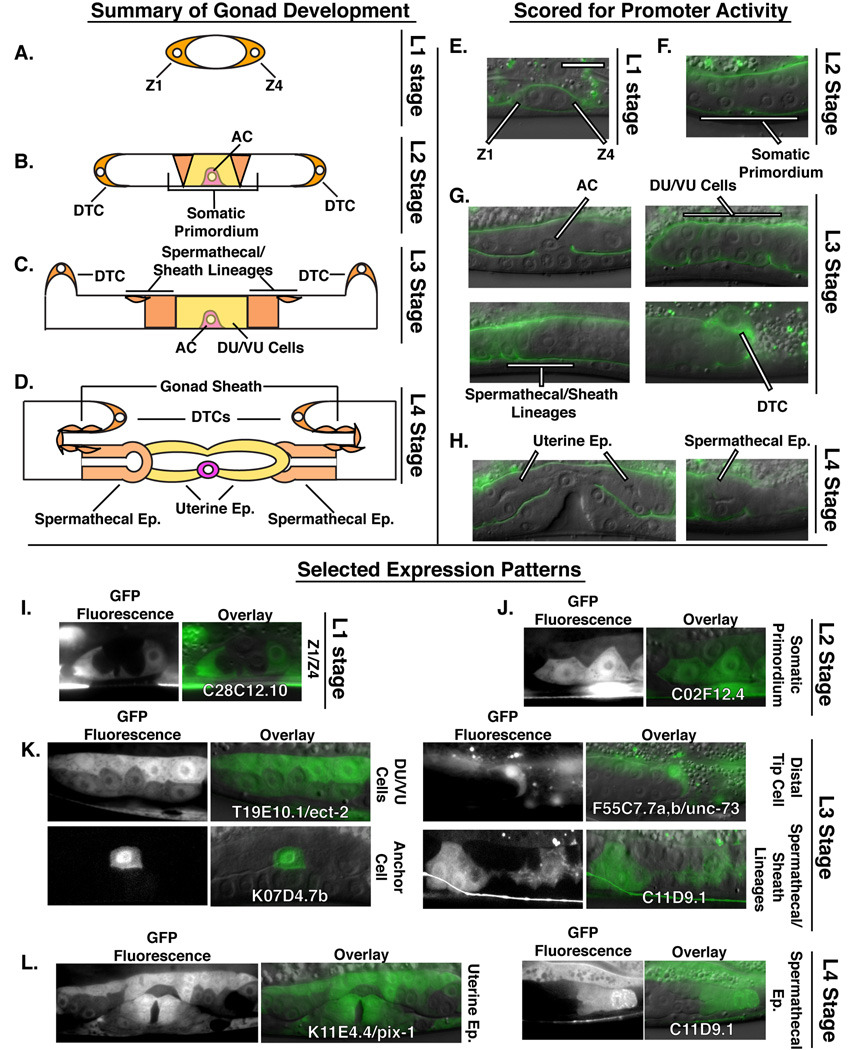Figure 1.
(A–D) Schematic representation of larval gonad development in C. elegans. (A) After hatching, during the L1 stage, the somatic gonad precursor cells Z1 and Z4 surround the primordial germ cells and are located on the anterior and posterior sides of the early gonad. (B) During the L2 stage these cells give rise to somatic lineages of the gonad including the distal tip cells (DTCs) and the cells of the somatic gonad primordium. (C) During the L3 stage the cells of the somatic gonad primordium divide to form the dorsal and ventral uterine cells (DU/VU cells) as well as the gonad sheath and spermathecal cells. (D) During the L4 stage, the uterine and spermathecal epithelia form mature lumens. The DTCs and the gonad sheath cells complete their migrations. (E–H) DIC micrographs overlaid with LAM-1::GFP fluorescence labeling the basement membrane which surrounds and outlines the gonad. RhoGEF 5’CRE activity was scored in: (E) Z1 and Z4 at the L1 stage; (F) the somatic gonad primordium at the L2 stage; (G) the AC, VU/DU cells, the spermathecal and sheath lineage and the DTCs during the L3 stage and (F) the uterine and spermathecal epithelia at the L4 stage. (I–L) Selected examples of RhoGEF 5’CRE activity during gonadogenesis: (I) 5’CREs from C28C12.10 were active in Z1 and Z4; (J) C02F12.4 was detected in the somatic gonad primordium; (K) T19E10.1/ect-2, K07D4.7b, F55C7.7a,b/unc-73 and C11D9.1 5’CRE activity detected in the DU/VU cells, AC, DTC and spermathecal and sheath lineages respectively; (L) K11E4.4/pix-1 5’CREs were active broadly within the uterine epithelium, whereas elements from C11D9.1 were active specifically within the spermatheca. Scale bar in (E) represents 20 microns. Abbreviations: epithelium, Ep; distal tip cell, DTC; anchor cell, AC; dorsal uterine cell, DU; ventral uterine cell, VU in this and all subsequent figures.

